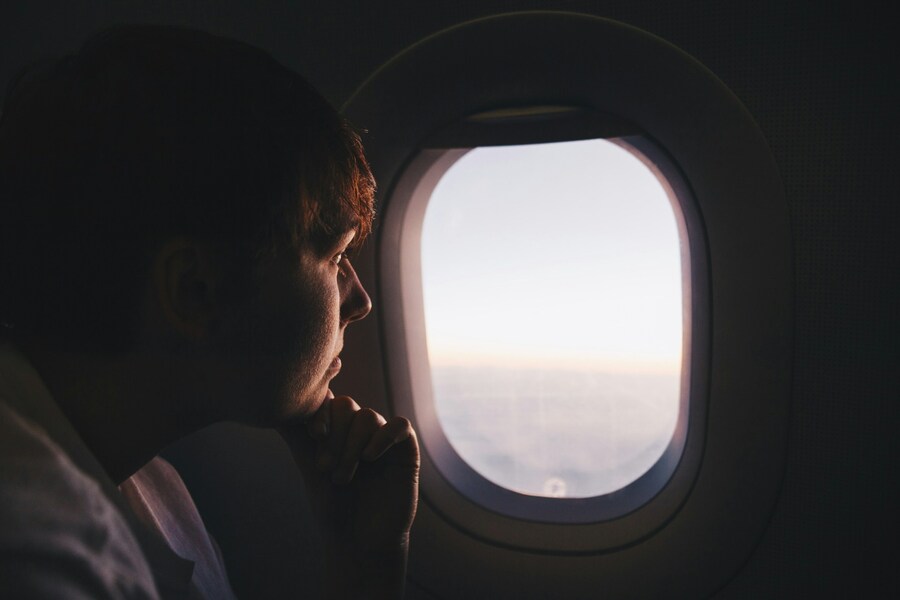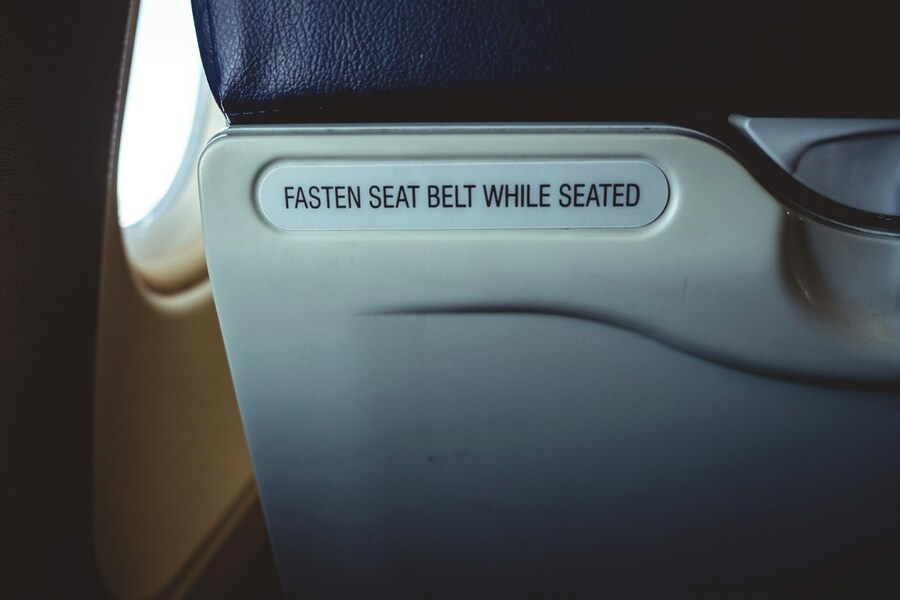Traveling by commercial airplane is one of the safest ways to get from one place to another. The data shows that the risk of getting hurt on larger planes is extremely low. On average, there are only 0.01 injuries for every 100 million miles traveled by passengers. This means that just a few dozen people get injured each year, which is much less than the millions who are hurt in car accidents. But for those who still feel worried about flying, there are things you can do to calm your fears and increase your chances of surviving an accident, even though that's very unlikely to happen. The first step is to choose the right seat. Find out what experts say is the safest part of the plane!
So where's actually the safest seat on a plane?
 Source: Luke Porter/Unsplash
Source: Luke Porter/Unsplash
What seats are the safest based on the information?
In 2015, TIME magazine looked at 35 years of data from the Federal Aviation Administration (FAA) about plane crashes that happened between 1985 and 2000. The report found that passengers sitting in the back third of the plane had a 32% chance of being killed in more serious accidents. This was a little lower than the 39% chance for passengers in the middle third of the cabin, and the 38% chance for those in the front third.
Digging deeper, passengers sitting in middle seats towards the back of the cabin had a 28% chance of being killed. This was also a bit lower than passengers in seats along the aisle or by the window. The idea is that passengers on both sides act as a buffer against the hard cabin wall or anything flying down the aisle during a crash. On the other hand, the highest chance of being killed anywhere on the plane was 44% for passengers in aisle seats in the middle third of the cabin.
The drawbacks of sitting in the back
While the back of the plane might have a slightly higher chance of survival in the unlikely event of a serious accident, that part of the cabin has a few drawbacks. Not only are the last rows the last to get off the plane or receive in-flight service, but the seats in the back usually experience more turbulence than the ones up front, which can make the trip less enjoyable. The rear seats are also often located near the bathrooms, which could mean dealing with unwanted smells. So you might want to think about whether those potential downsides are worth the benefit, especially considering how safe air travel is overall.
 Source: Cathal Mac an Bheatha/Unsplash
Source: Cathal Mac an Bheatha/Unsplash
By the way… For many travelers, a smooth and stress-free airport experience is just as important as safety. Airport parking rates can vary greatly depending on the location and amenities offered. Our smart booking platform, ParkingNearAirports.io, helps you find affordable parking near St. Louis Airport, convenient Charlotte Douglas Airport valet parking, and more, so you can save money and avoid the hassle of circling for a spot. Just join our friendly team and make the most of your upcoming journey!
Is sitting close to the exit even safer?
A study from 2011 suggests that it's better to sit near an exit row. People sitting within 5 rows of an exit are more likely to evacuate the plane safely if there's an emergency. If you're not seated close to the exit, try this: when you get on the plane, count how many rows are between you and the exit. That way, if there's smoke in the cabin, you'll be able to find the exit even if you can't see clearly.
Remember that every accident is different…
Airplane accidents are extremely rare. But when they do happen, each incident is usually different – there are always exceptions. Sometimes the problem is with the plane's mechanics, other times it's the weather or human error. The issue could be as specific as the tail of the plane or a collision at the back. If that's the case, the "safer" rear seats actually become more dangerous. Given all these variables, some people argue that there's no safest seat on the plane (in fact, the FAA says all seats are equally safe). Ultimately, it's up to each passenger to choose the seat that makes them most comfortable.






